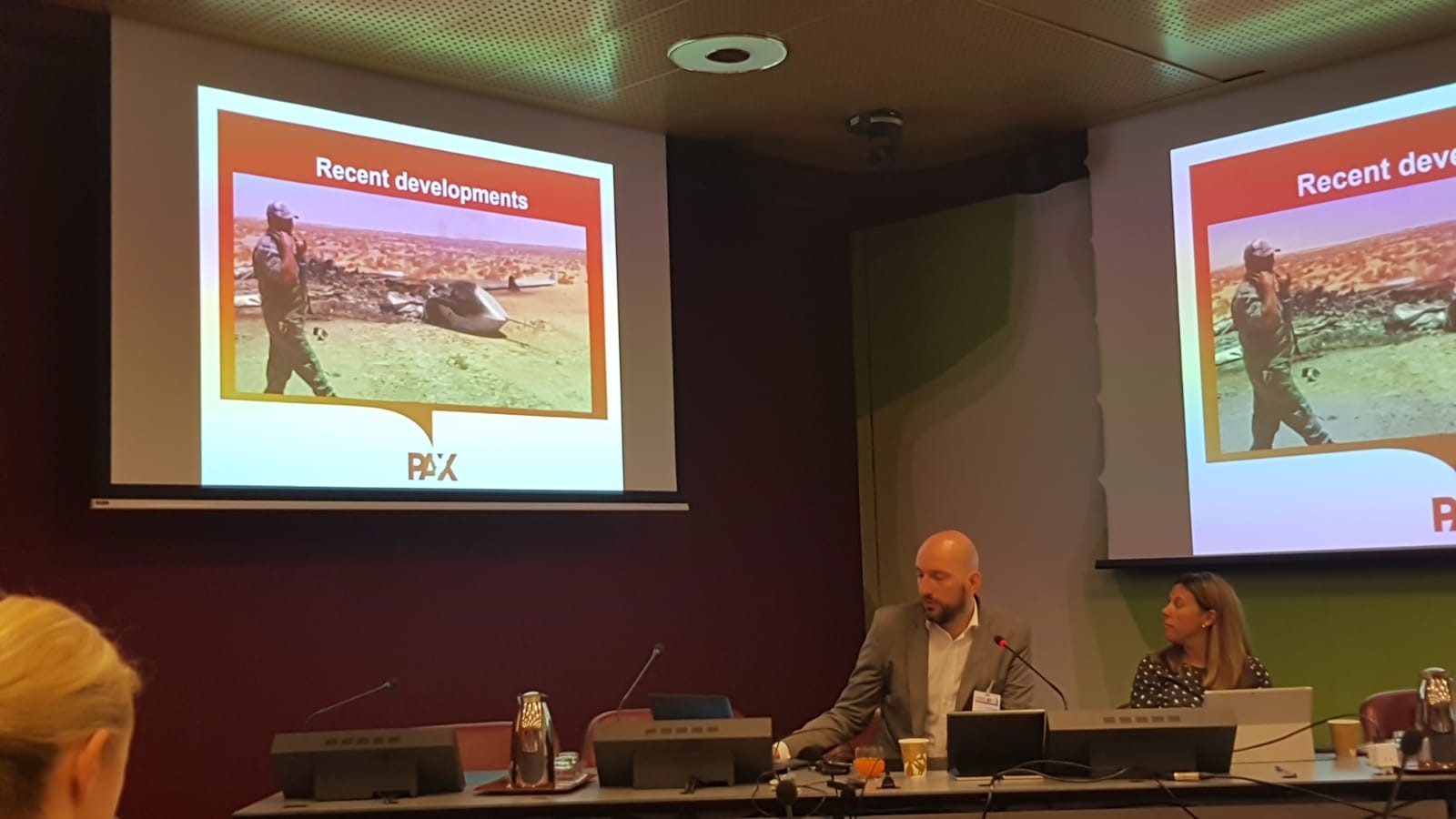Armed Drones & Export Controls at UN

Wim Zwijnenburg, PAX
Background
A new era in the use of armed violence has emerged over the last couple decades. In an effort to improve situational awareness of the battlefield, lower costs and reduce risks to military personnel armed forces are increasingly deploying remote controlled vehicles, better known as drones. Over 120 States have acquired military drones, and more than 20 states have armed versions and using them actively. At the same time, States are also stepping up research, developing and export potentials of military drone technology. This increase in the use and proliferation of military drones contributes to a decrease in the threshold for the use of lethal force by States, and in growing trend, also by non-State actors.
Drones armed with missiles and bombs are killing and wounding of thousands of civilians, in particular in the clandestine counter-terrorism operations in remote areas in Pakistan, Yemen and Somalia. These operations have been conducted without clear legal justifications for targeting suspected terrorists, and the lack of transparency and accountability around these operations has so far contributed to a murky state of affairs regarding the use of lethal force with armed drones.
Current violent dynamics in the Middle East and northern Africa involving armed drones and so-called ‘suicide drones’ by states and non-state actors already sped-up force escalation, resulted in the death of civilians and have targeted critical infrastructure such as airports, power plants and oil refineries. The reverberating and cumulative effects of their increased use could impact civilians lives or create serious risk environmental risks.
Despite calls by UN Special Rapporteurs, national Parliaments, the European Parliament, human rights and peace organisation and victims of drone strikes, States have not yet clarified their legal position. The absence of reaffirming a progressive legal interpretation risks normalizing the stretched interpretation of international humanitarian law and international human rights law applied by current users of armed drones in counter-terrorism operations. Now more than ever a clear position is needed to strengthen international norms and prevent drone wars waged on murky legal and political grounds.
Legal, ethical, political and military-strategic concerns associated with the increase use of armed drones should be part of a multilateral process to address the growing application of lethal force with remote controlled systems. Strong and progressive international standards and risks-assessments should be developed and incorporated in arms export controls mechanisms, as called for by the UN Secretary-General in his Agenda for Disarmament. Reviews of the rapid technological developments of drone platforms and payloads, and their use in military operations should be made a part of regular risk assessment processes.
Current Context
During the UNGA in 2018, 16 States expressed concerns over armed drones in their statements, comparing with 7 States in 2017. This demonstrates a growing interest from States in addressing the challenges around armed drones use. Meanwhile, a core-group of States led by the US has stepped up the drafting of international standards for the “responsible export and subsequent use of drones”. Concerns have been raised that this process lacks transparency, inclusion and is leading to weak language which risks undermining existing export control frameworks.
Various reports published by UNIDIR in 2018 and 2019 highlighted the risk of force-escalation and proliferation, while other reports by human rights groups and investigative journalists highlighted the expanding clandestine US drone operations, and deliveries and use of drones in the Libyan conflict.
Beyond the condemnation of current unacceptable practices, an international policy response is needed that addresses the role of drones in the use of force. Multilateral dialogue will be vital to the development of robust, progressive and meaningful future-proof standards that contributes to holding states accountable for both export decisions and subsequent use.
During First Committee, delegations should:
- Recognise the ethical, legal, and humanitarian concerns that drones bring to the use of force in the contemporary landscape, and express a commitment to reducing and addressing harm and ensuring the protection of rights;
- Recognise the grave risk that international legal frameworks could be eroded through the use of armed drones, in the context of practices that challenge existing norms;
- Assert the need for transparency in the use of drones by any and all states, for the recording of casualties and the addressing of victims’ rights, and for accountability and democratic oversight; and
- Recognise the need for a broader multilateral conversation about what role drones should play in the use of force and the specific limits and standards for their use.
Beyond First Committee, states should:
- Raise these issues in all relevant forums international and regionally, including human rights-focused forums. Ensure that issues related to export control are pursued in relevant forums, such as the Arms Trade Treaty;
- Develop progressive, detailed policies and standards on the use and export of military drones that align with and strengthen international norms;
Wim Zwijnenburg

